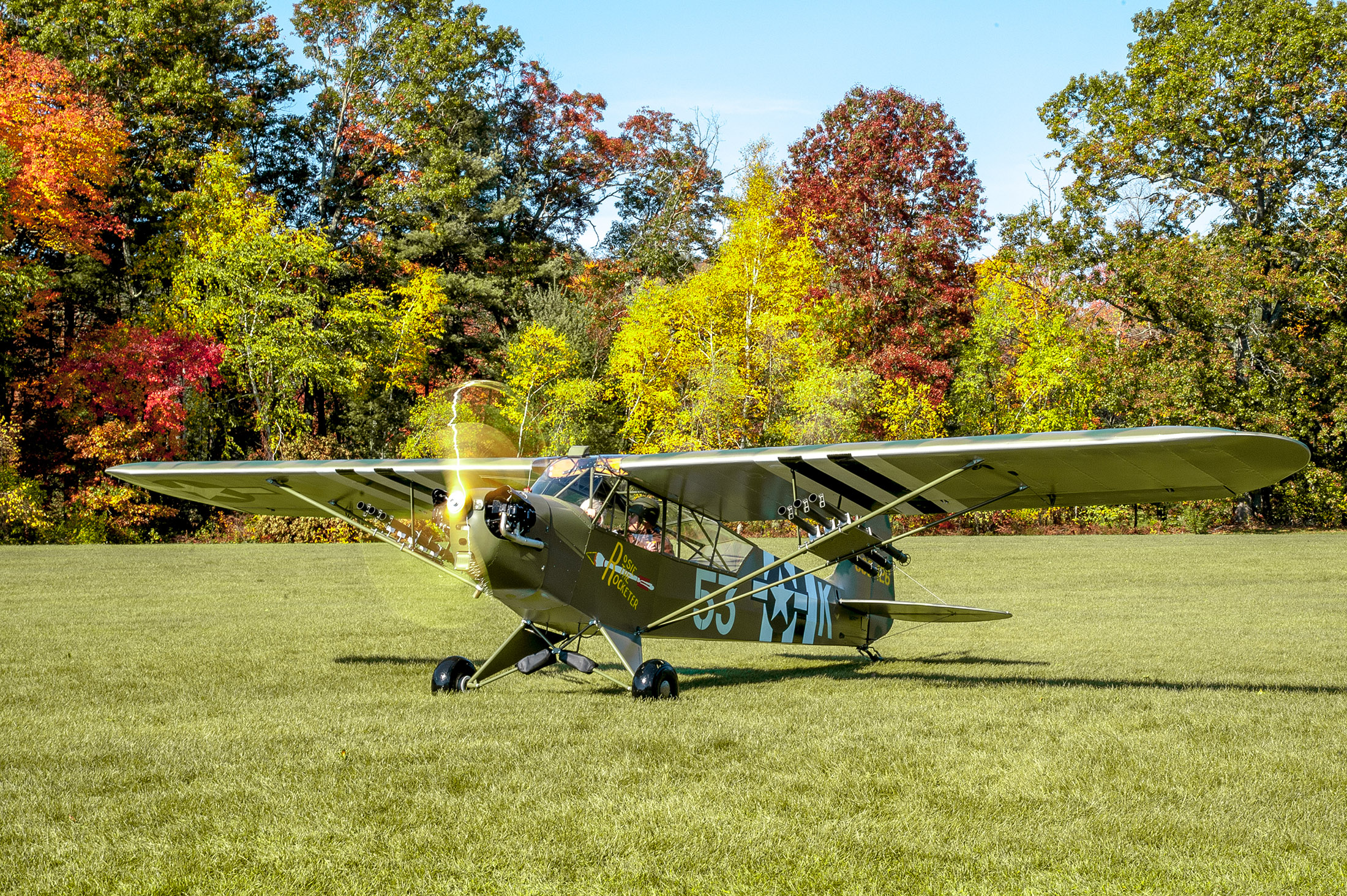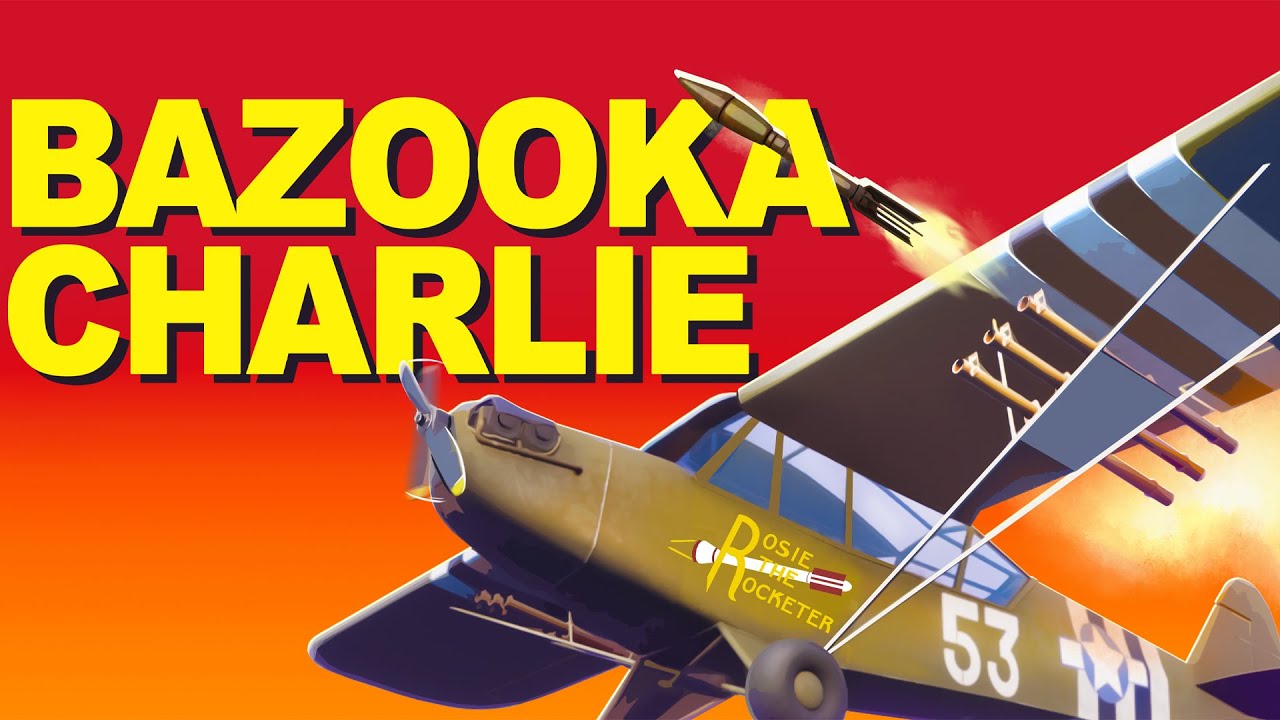The Piper L-4 Grasshopper is a military version of the famous 1930’s Piper Cub. The aircraft has a simple, lightweight design which gives it good low-speed handling properties and short-field performance. The Grasshopper/Cub is one of the best known light aircraft of all time. The L-4 was typically used for reconnaissance, artillery spotting, and moving personnel behind the lines.
Grasshopper L-4H 43-30426 was built by the Piper Aircraft Company of Lock Haven, PA, during the first week of April, 1944. Bearing manufacturer’s serial number 11717, it was accepted by the USAAF as 43-30426 and shipped overseas.
As part of the D-Day build up, it may have been assembled in England or in France. But soon it was assigned to the 1st Bombardment Division, supporting the US Army’s 4th Armored Division, and General George Patton’s Third Army. Taken as the personal plane of Major Charles Carpenter for observation and artillery spotting, it was not long before the warrior spirit of Major Carpenter began to chafe at the little L-4’s lack of punch.
With official approval, he modified the plane. First, he attached a M-1 bazooka to each wing, giving the plane some firepower. The Cub can be nearly silent as it flies just over the trees, and the ability to sneak up on targets probably gave Carpenter some ideas. As the offensive grew increasingly perilous in France, Maj. Carpenter increased the armament of the little L-4 now named “Rosie the Rocketer.” By adding six M6A3 HEAT rockets, these weapons could effectively pierce the top armor of the heaviest German tanks.
“Major Carpenter once told a reporter that his idea of fighting a war was to “attack, attack and then attack again.”
“One of Carpenter’s longest missions occurred on September 20, 1944 during the Battle of Arracourt near Nancy, France, when German armored forces launched a sudden tank attack on the headquarters component of the 4th Armored Division’s Combat Command A, in the process trapping or pinning down several 4th AD support units. Around noon, the fog began to lift, and Carpenter spotted a company of German Panther tanks and armored cars advancing towards Arracourt. Diving through a barrage of German ground fire in a continuing series of attacks against the German formation; Carpenter fired all of his bazooka rockets. Returning to base to reload, Carpenter flew two more sorties that afternoon, firing no fewer than sixteen bazooka rockets at the advancing enemy. “Rosie the Rocketer” was later credited with immobilizing two German tanks and several armored cars, while killing or wounding a dozen or more enemy soldiers. Carpenter’s attacks also forced the remaining Panther tanks in the formation to retreat, in the process enabling a trapped 4th Armored water point support crew, who had witnessed Carpenter’s actions that day, to escape capture and destruction. “Some people around here think I’m nuts,” Major Carpenter was quoted as saying, “but I just believe that if we’re going to fight a war we have to get on with it sixty minutes an hour and twenty-four hours a day.”
The Associated Press reporter Wes Gallagher, in a 1945 article in Liberty Magazine, concluded that the major was “a legend in an outfit where reckless bravery is commonplace.”
Discovered by the Foundation in Austria, with the help of research specialist Joe Scheil, this historic L-4H was a surprise find! With a victory tally that included 2 Tiger tanks and 4 other tanks, no other surviving tank or aircraft of the Second World War had a more illustrious total of enemy tanks destroyed.
We are proud to restore this American legend back to its original configuration as when Major Carpenter flew it in 1944.
The L-4 “Rosie the Rocketer” is located inside the American Heritage Museum as part of the War In Europe Gallery and is suspended on an attack run behind the German Panther tank. It is maintained in flying condition and participates in several events each year at the AHM.









